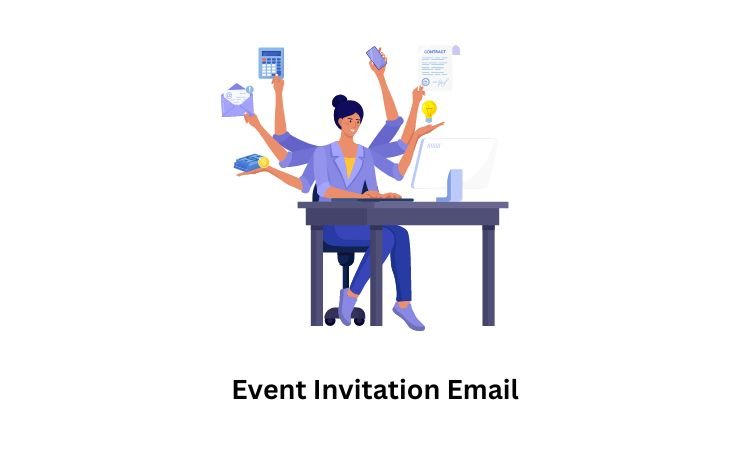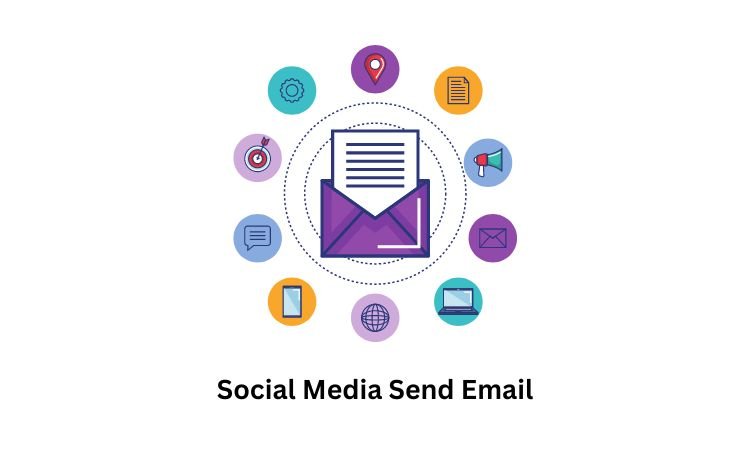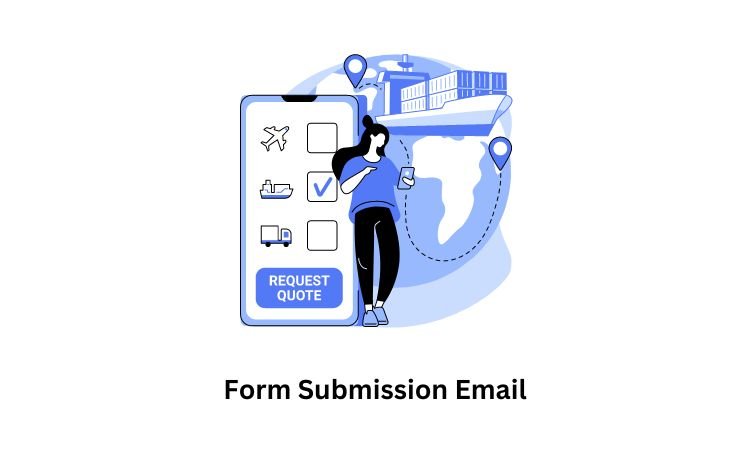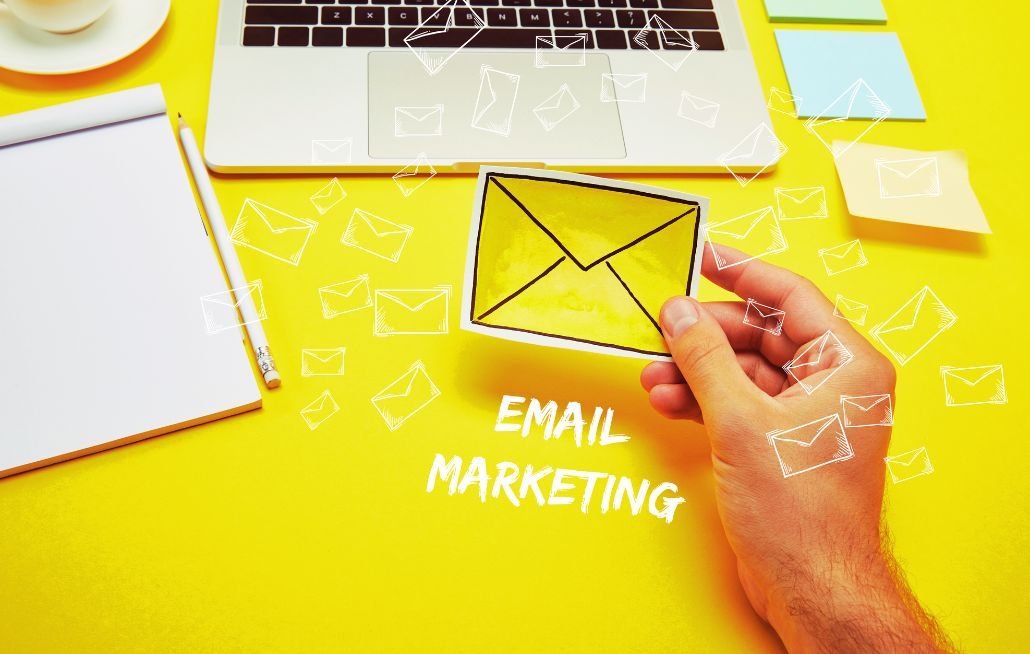Table of Contents
Email marketing has become one of the most effective channels in terms of building relationships and driving revenue. It has proved itself as one of the primary communication channels in recent years. According to the latest report, there are nearly 4.26 billion active email users worldwide in 2022. It is supposed to reach 4.6 billion in 2025. To use it with utmost profit, you need to understand the various types of email marketing and their benefits.
In this article, we’ll discuss what email marketing is and the various types of email marketing with their benefits. Let’s get started.
What is Email Marketing?
E-mail stands for Electronic Mail.
Email marketing refers to the practice of sending targeted messages or promotional content to a group of individuals via email. It is a highly effective digital marketing strategy that allows businesses to directly communicate with their customers or prospects in a more personal and direct manner.
Email marketing involves building an email list of subscribers who have voluntarily provided their email addresses, usually through sign-up forms on websites or during the purchase process. Once the list is established, businesses can send various types of emails to engage their audience, including newsletters, product updates, promotional offers, event invitations, and more.
Email marketing offers several advantages, such as cost-effectiveness, scalability, and the ability to track and measure performance metrics like open rates, click-through rates, and conversions.
Also read: Email Marketing Software
Let’s now know about the 12 common types of email marketing that you can use for your business growth.
1. Product Update Email
This is one of the popular types of email marketing which are being used the most. A Product Update Email is a type of email marketing that informs subscribers about updates, enhancements, or new features related to a specific product or service. It is an effective way for businesses to communicate with their customers and keep them informed about relevant changes.
How to Use Product Update Email
Keep your customers informed about the latest product enhancements, features, and updates. Include detailed information, screenshots, and customer testimonials to showcase the value and benefits of the updates. Encourage recipients to explore the new features, try them out, and provide feedback to further improve their experience.
Benefits of Product Update Email
- Customer Retention: Keeps customers satisfied and loyal.
- Upselling Opportunities: Increases revenue through additional sales.
- Improved User Experience: Enhances customer satisfaction.
- Reduced Support Queries: Minimizes customer confusion as well as support requests.
- Enhanced Brand Perception: Positions the brand as innovative and customer-focused.
2. Event Invitation Email
An Event Invitation Email is a type of email marketing that invites recipients to attend a specific event, such as a webinar, conference, or product launch.

How to Use Event Invitation Email
Drive attendance to your upcoming events by creating a compelling email invitation. Clearly state the event details, including date, time, location, and any special guests or speakers. Provide a clear call-to-action for registration, along with any early bird discounts or limited seating availability. Encourage recipients to secure their spot and share the event with their network.
Benefits of Event Invitation Email
- Increased Event Registrations
- Targeted Audience Engagement
- Brand Awareness and Exposure
- Networking Opportunities
- Data Collection and Insights
Also read: eCommerce marketing Automation
3. New Content Announcement Email
A New Content Announcement Email is a type of email marketing that informs subscribers about new content, such as blog posts, articles, videos, or podcasts.
How to Use Content Announcement Email
Introduce your latest content offerings to your subscribers, highlighting the key takeaways, insights, or entertainment value they can expect. Include a brief summary or teaser, along with a direct link to access the content. Encourage readers to engage with the content, leave comments, and share it with others who might find it valuable.
Benefits of New Content Announcement Emails
- Increased Website Traffic
- Improved Audience Engagement
- Establishing Thought Leadership
- Building Customer Loyalty
- Expanding Brand Reach
4. Newsletter Email
Newsletter emails are regular updates sent to subscribers, typically on a weekly or monthly basis. They provide valuable content, such as industry news, tips, trends, and product updates.

How to Use Newsletter Email
Deliver a valuable newsletter that provides industry news, expert insights, and exclusive content to your subscribers. Include informative articles, practical tips, or case studies that address their pain points or interests. Encourage readers to take action, such as trying out a new strategy, signing up for a webinar, or exploring a new product offering.
Benefits of Newsletter Email
- Builds brand loyalty and fosters ongoing relationships with subscribers.
- Establishes the brand as an authority by providing valuable industry insights and updates.
- Drives website traffic by directing recipients to relevant content.
- Increases engagement and click-through rates through personalized content and tailored recommendations.
- Boosts customer retention by keeping subscribers informed and engaged with the brand.
5. Co-marketing Email
Co-marketing Email is a collaborative email marketing strategy where two or more brands partner together to create and send a joint email campaign.
How to Use Co-marketing Email
Collaborate with complementary brands to create a joint email campaign that offers a unique value proposition to recipients. Clearly communicate the benefits of the partnership and how it directly relates to their needs or interests. Provide a strong call-to-action that encourages recipients to engage with both brands and take advantage of any exclusive offers or incentives.
Benefits of Co-marketing Emails
- Expanded Audience Reach
- Access to New Customer Segments
- Increased Brand Credibility and Trust
- Shared Marketing Costs and Resources
- Enhanced Campaign Effectiveness and Results
6. Social Media Send Email
A Social Media Send Email is an email marketing strategy that encourages recipients to engage with a brand’s social media channels.

How to Use Social Media Send Email
Leverage the power of your email list to grow your social media presence. Encourage subscribers to connect with your brand on various social media platforms, highlighting the exclusive content, contests, or behind-the-scenes access they can gain by following you. Include direct links to your social media profiles and ask readers to share your content with their network to expand your reach.
Benefits of Social Media Send Emails
- Increased Social Media Following
- Amplified Brand Visibility and Reach
- Enhanced Customer Engagement and Interaction
- Improved Brand Advocacy and User-Generated Content
- Expanded Opportunities for Social Media Marketing Campaigns
7. Dedicated Send Email
A Dedicated Send Email is a standalone email that focuses on a specific offer, promotion, or message without any other distractions.
How to Use Dedicated Send Email
Use a dedicated email to deliver a specific offer, promotion, or message directly to your audience. Craft a compelling subject line and a concise, persuasive email body that clearly communicates the value and urgency of the offer. Include a prominent call-to-action that drives recipients to take the desired action, whether it’s making a purchase, signing up for a webinar, or requesting more information.
Benefits of Dedicated Send Emails
- Clear and Focused Messaging
- Increased Conversion Rates
- Enhanced Brand Visibility and Recall
- Improved Personalization and Targeting
- Simplified Tracking and Performance Analysis
8. Internal Update Email
An Internal Update Email is a type of email communication within an organization that provides updates, announcements, or important information to employees or team members.
How to Use Internal Update Email
Share important updates, announcements, or changes within your organization with your team members. Clearly communicate the purpose, impact, and next steps related to the update. Provide any necessary resources, instructions, or deadlines to ensure everyone is aligned and can take appropriate actions as needed.
Benefits of Internal Update Emails
- Efficient Internal Communication
- Ensured Team Alignment and Awareness
- Improved Collaboration and Coordination
- Enhanced Employee Engagement and Morale
- Streamlined Information Sharing and Documentation
9. Form Submission Email
A Form Submission Email is an automated email notification that is sent to the recipient or designated team when a form on a website or landing page is submitted by a user.

How to Use Form Submission Email
Automatically send personalized emails to acknowledge and thank users for submitting a form on your website. Express appreciation for their interest or request and provide any relevant information or next steps. Encourage recipients to explore your website further, sign up for additional resources, or contact you for any further assistance.
Benefits of Form Submission Emails
- Real-Time Lead or Customer Acquisition
- Prompt Follow-up and Response
- Efficient Lead Management and Tracking
- Improved Customer Service and Support
- Enhanced Conversion Rates and Sales Opportunities
10. Transactional Email
Transactional emails are automated messages sent in response to a customer’s specific action, such as a purchase confirmation, shipping notification, or password reset. These emails provide important information, enhance customer experience, and build trust and credibility with the brand.
How to Use Transactional Email
Deliver transaction-related emails, such as order confirmations, shipping notifications, or account updates, to provide customers with real-time information and peace of mind. Clearly state the details of the transaction, including order numbers, delivery dates, or account changes. Include relevant contact information or support resources to address any questions or concerns they may have.
Benefits of Transactional Email
- Provides important information and updates to customers in real-time.
- Enhances customer experience and satisfaction through timely and relevant communication.
- Builds trust and credibility by confirming purchases, order status, or account activities.
- Presents opportunities for cross-selling or upselling complementary products or services.
- Increases customer engagement and loyalty by delivering personalized transactional experiences.
11. Confirmation/Thank Email
A Confirmation/Thank You Email is an automated email sent to acknowledge and express gratitude to a user or customer after they have taken a specific action, such as making a purchase, subscribing to a service, or completing a form.
How to Use Confirmation/Thank You Emails
Express gratitude for specific actions taken by customers, such as purchases, subscriptions, or form submissions. Confirm the details of the action and provide any necessary follow-up information or next steps. Include a personalized message that acknowledges their contribution or decision, and express appreciation for their support. Encourage recipients to continue engaging with your brand and offer additional resources or incentives for their loyalty.
Benefits of Confirmation/Thank You Emails
- Enhanced Customer Satisfaction and Loyalty
- Increased Brand Trust and Credibility
- Opportunities for Upselling or Cross-selling
- Reduced Customer Support Queries
- Improved Customer Retention and Repeat Business
12. Lead Nurturing Email
Lead Nurturing Emails are a series of targeted and automated emails sent to prospects in order to build relationships, educate them about products or services, and guide them through the sales funnel.
How to Use Lead Nurturing Emails
Nurture leads through a series of automated emails that provide valuable content and guide them through the customer journey. Segment your leads based on their interests or behaviors to deliver targeted, personalized messages. Educate them about your offerings, address their pain points, and provide solutions. Include clear calls-to-action that encourage them to take the next step, such as requesting a demo, scheduling a call, or making a purchase.
Benefits of Lead Nurturing Emails
- Increased Conversion Rates and Sales Opportunities
- Personalized and Relevant Communication
- Establishing Brand/ Domain Authority and Trust
- Improved Lead Qualification and Segmentation
- Enhanced Customer Engagement and Relationship Building
Best Techniques for Creative Email List Building
Here are some best techniques for creative email list building presented:
1. Offer Incentives
Provide exclusive offers, discounts, or freebies in exchange for email subscriptions to entice users to join your list.
2. Create Compelling Lead Magnets
Develop valuable and relevant content resources, such as e-books, guides, or templates, and offer them as downloadable assets in return for email sign-ups.
3. Implement Exit-Intent Pop-ups
Use pop-up forms that appear when users are about to leave your website, offering them a reason to stay by subscribing to your email list.
4. Host Contests or Giveaways
Run contests or giveaways that require users to submit their email addresses for participation, boosting both engagement and email list growth.
5. Leverage Social Media
Promote your email newsletter or exclusive offers on social media platforms to attract followers and encourage them to join your email list.
6. Utilize Content Upgrades
Offer additional bonus content or resources directly related to specific blog posts or articles, accessible only through email subscription.
7. Create Landing Pages
Develop dedicated landing pages optimized for conversion, highlighting the benefits of subscribing to your email list and making it easy for users to sign up.
8. Use Gamification
Add interactive elements, such as quizzes or assessments, that require users to provide their email addresses for participation and receive personalized results.
9. Optimize Website Opt-in Placements
Place prominent opt-in forms strategically on your website, such as the header, sidebar, or within high-traffic pages, to capture visitor attention.
10. Collaborate with Influencers
Partner with influencers or industry experts to co-create gated content or exclusive offers, leveraging their audience to grow your email list.
Myths About Email Marketing
There are many misconceptions about email marketing and that’s more important before you start email marketing strategies. Here are they:
- Email Marketing has a 3800% ROI and $38 for every $1 spent, debunking the myth that it’s dead.
- Email Marketing Automation is cost-effective, contrary to the belief that it’s expensive and time-consuming.
- Unsubscribes indicate the email didn’t reach the right audience, rather than being solely negative.
- Subject lines should ideally be 41-50 characters for desktops and 35 characters for mobile devices.
- Message Match is crucial for email post-click landing pages, despite some marketers thinking otherwise.
- There’s no one perfect day to send emails, dismissing the misconception that such a day exists.
Top 10 Free Email Marketing Tools
Here’re the popular ten email marketing free tools that you can use with limited access. The tools also offer paid services with full access.
| HubSpot | Omnisend |
| Mailchimp | SendPulse |
| MailerLite | Benchmark Email |
| Sender | Mailjet |
| Sendinblue | Moosend |
Get the tool: HubSpot
Final Thought
Almost 4.2 billion people use emails and this describes the importance of using email as a great marketing tool. There is no doubt that email marketing has lots of competition and you can win this by the best email marketing tools and strategies.
Therefore, to use effective email marketing strategies, you must understand various types of email marketing and usage. In addition, to get expertise in email marketing, you need self-tests and practices. With time, you will certainly increase your skills and satisfy your ambition to grow your business through email marketing.
[article_faq]





